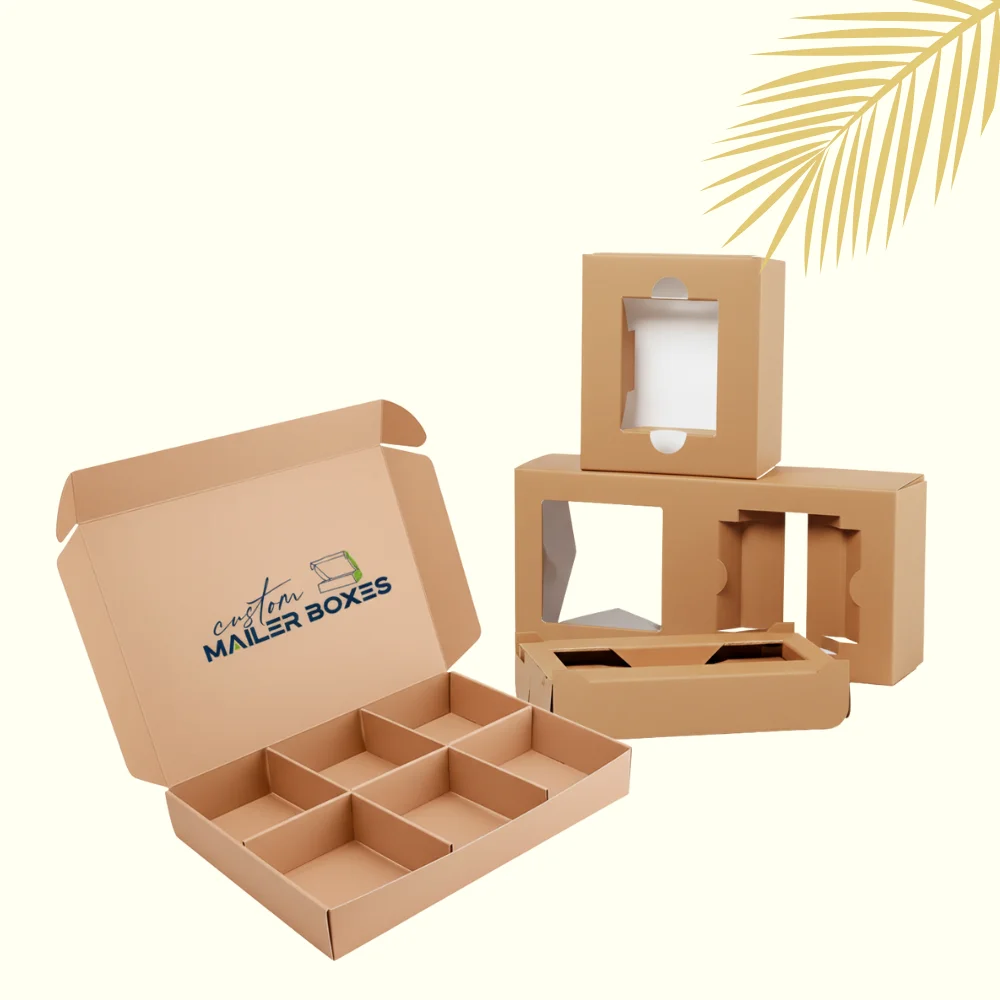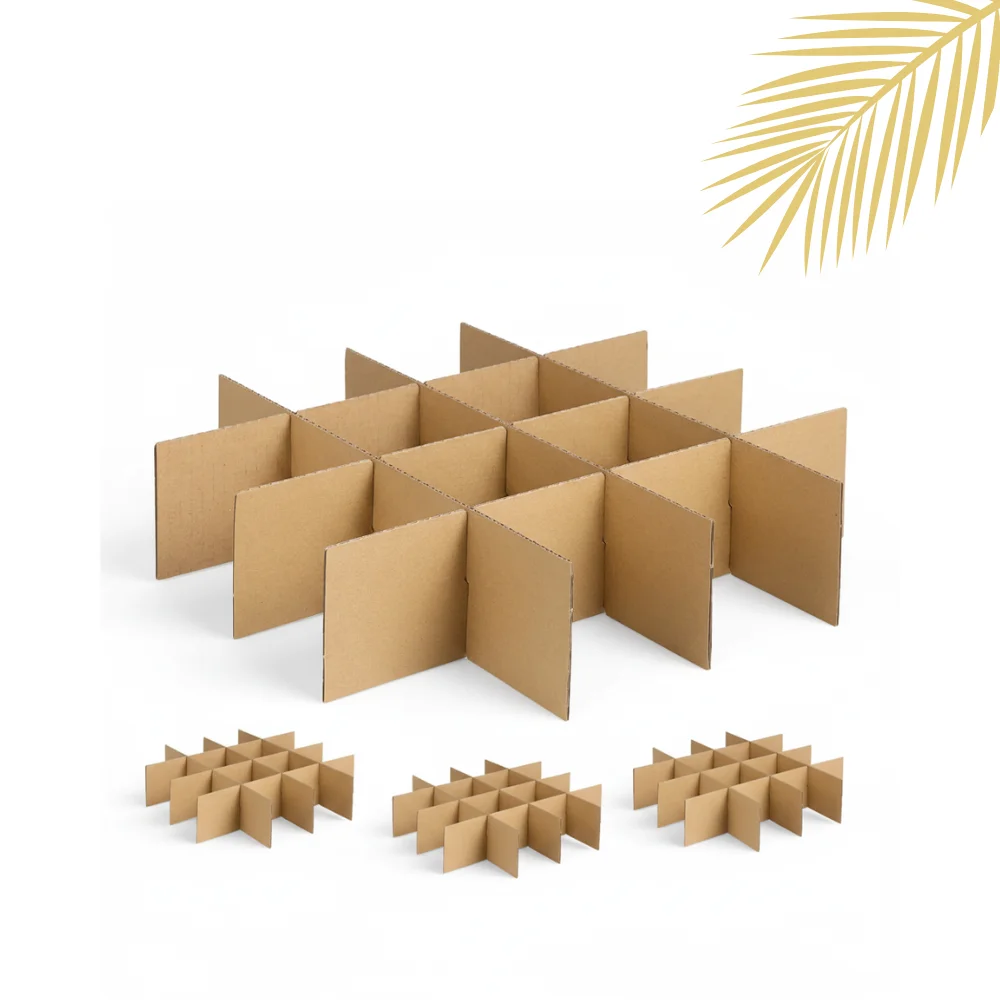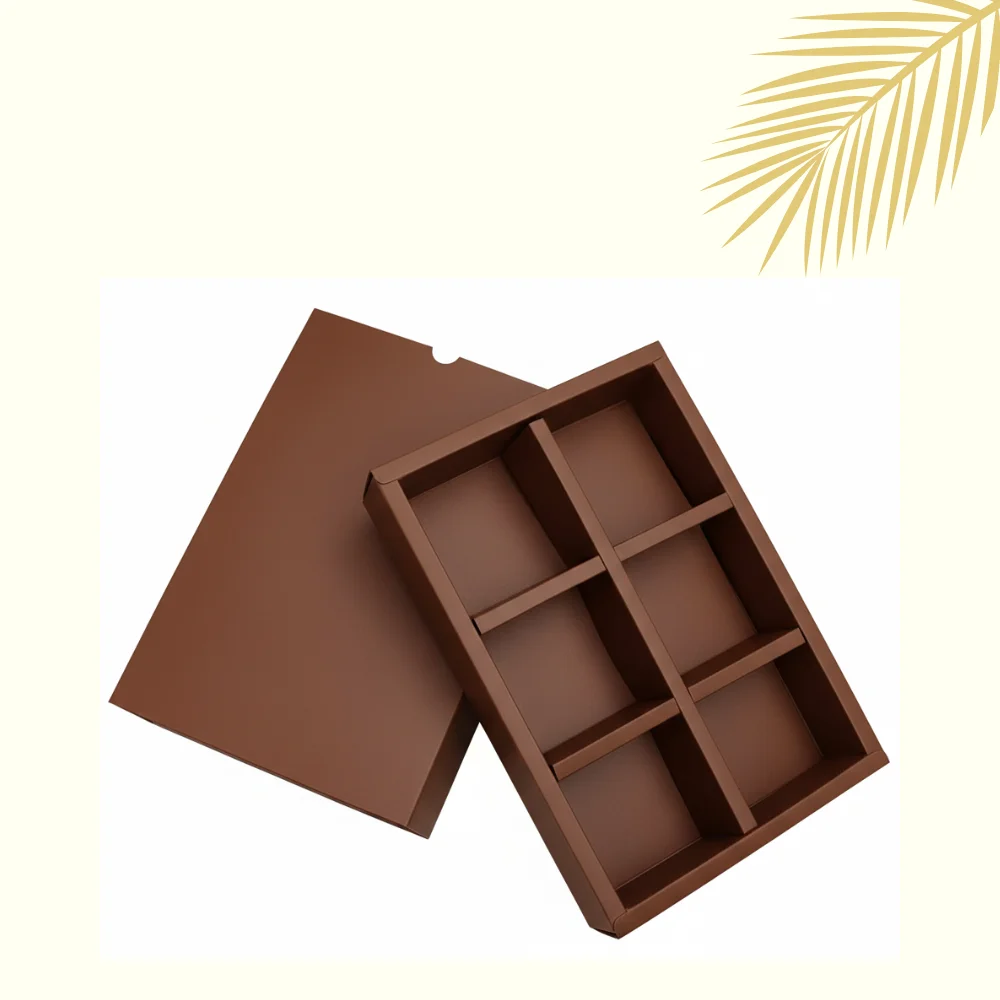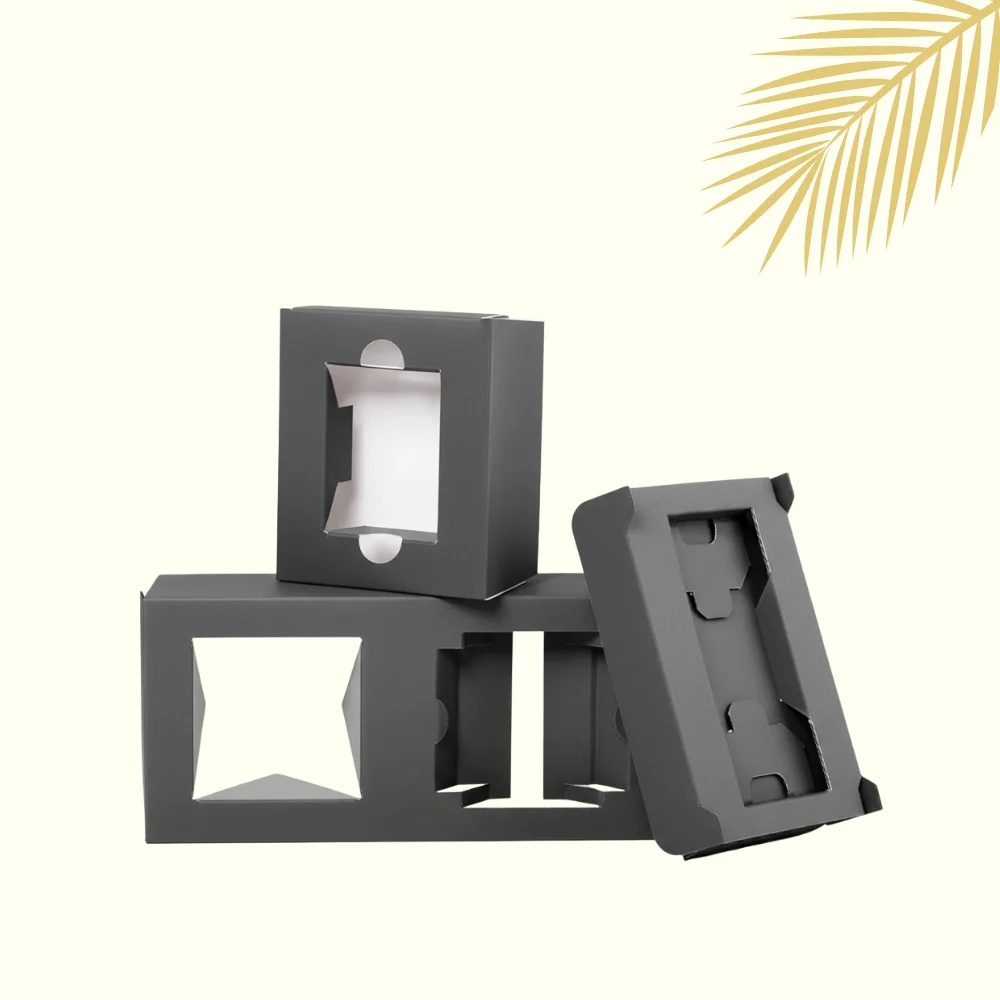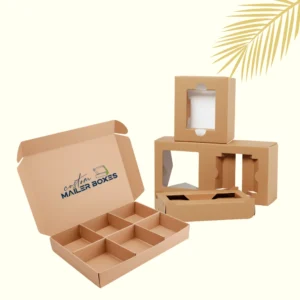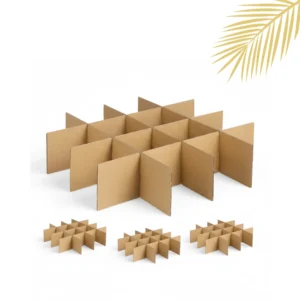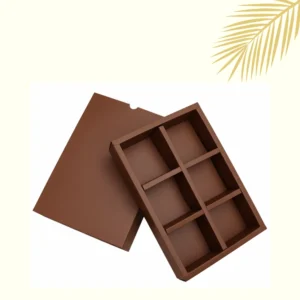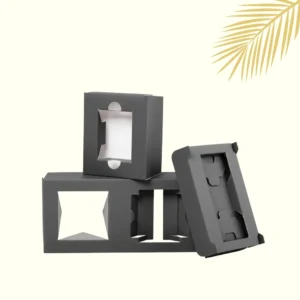If your products arrive scuffed, rattling, or out of place, the box is only doing half its job. Packaging box dividers & inserts turn into a protection system: they keep parts separated, hold items upright, absorb shocks, and present everything neatly when the lid opens. Below is a straightforward guide to the main styles, materials, specs, and when to use each—written from a production floor point of view.
What They Do and Why They Matter
- Stop movement in transit so finishes do not rub or chip.
- Prevent collisions between items sharing a carton.
- Speed packing with clear positions for each SKU.
- Improve unboxing, products land centered and camera-ready.
- Cut returns by reducing breakage and leakage.
Common Styles for Packaging Box Dividers & Inserts
1) Cell Dividers / Partitions
Interlocking vertical cards that form a grid of cells inside a shipper or display carton.
- Best for: Bottles, jars, candles, glass, ceramics, snack pouches.
- Pros: Quick to assemble at scale, flat-packed, low material cost.
- Notes: Cell size should be 2–3 mm larger than product’s max diameter (or 1/16–1/8 in).
2) Pads, Layers, & Slipsheets
Flat pieces acting as cushions or stack separators.
- Best for: Layering fragile goods, separating hardware sets, top/bottom cushioning.
- Pros: Cheapest way to add impact resistance and scuff control.
3) Die-Cut Inserts (Paperboard)
A one-piece or multi-piece carrier with cutouts that “nest” the product.
- Best for: Cosmetics, soaps, electronics accessories, small glass.
- Pros: Brandable, precise fit, quick hand-load, elegant presentation.
- Notes: Add thumb notches for easy removal; keep thin bridges ≥3 mm to avoid tear-outs.
4) Corrugated Cradles & Trays
Shaped beds or trays made from corrugated, sometimes with locking tabs.
- Best for: Heavier items, multiple SKUs in a master shipper, e-commerce kits.
- Pros: High crush strength, absorbs vibration, cost-effective at volume.
5) Rigid Board Gift Inserts
Premium, thicker board wrapped to match a rigid setup box.
- Best for: Luxury sets, candle duos, skincare kits, corporate gifts.
- Pros: High perceived value, immaculate presentation, long shelf life.
(Foam/EVA and molded pulp are available on request, but we prioritize paper-based options for recyclability and brand printability.)
Materials & Typical Specs
Folding Carton Paperboard (SBS or Kraft)
- Caliper (thickness): 16–28 pt (0.4–0.7 mm) for most retail inserts.
- Print: Excellent for full-color brand work, barcodes, and fine type.
- Use: Die-cut trays and carriers inside printed retail boxes.
Chipboard (Greyboard)
- Caliper: 22–60 pt (0.56–1.52 mm).
- Use: Cost-efficient pads, stiffeners, and non-printed internal layers.
- Note: Usually uncoated, consider a top liner if product is delicate or oiled.
Kraft (Unbleached)
- Caliper: 18–28 pt for inserts, E-flute or B-flute for partitions.
- Use: Natural look, strong tear resistance, easy recycling.
Corrugated (Single Wall)
- Flutes:
- E-flute: ~1.2–1.8 mm, tight print, retail-grade cradles and trays.
- B-flute: ~2.5–3.5 mm, good crush resistance for partitions.
- C-flute: ~3.5–4.0 mm, bulkier cushioning for heavier goods.
- Performance:
- ECT: 32–44 ECT common for inner components in shipper systems.
- Burst/Edge: Sized per weight and stack needs; we spec after learning your ship method.
- Use: Partitions for glass/jar packs, e-commerce set cradles.
Rigid (Setup) Board
- Caliper: 60–120 pt (1.5–3.0 mm) before wrap.
- Use: Luxury gift inserts that must hold shape perfectly.
- Finish: Wrapped with printed cover paper, can match the outer rigid box.
Sustainability, at a glance: Our standard paper-based options are recyclable, with FSC-certified stocks available. We can specify water- or soy-based inks and film-free windows where practical.
Fit Rules That Save You Headaches
- Clearance: Target 1–2 mm (1/32–1/16 in) clearance around product per side to allow hand-loading without rattle.
- Depth: Insert pockets should be 2–3 mm (≈1/8 in) deeper than the item’s “settled” height to keep it seated.
- Tolerances: Paper expands with humidity, so design for ±0.5 mm (±1/64–1/32 in) on tight nests and ±1 mm (±1/16 in) on cell partitions.
- Edges: Round tight inside corners (minimum 1.5 mm radius) to reduce tear-outs on thin bridges.
- Barriers: For oils or balms, add a light aqueous or PE barrier on contact areas to resist staining.
When to Choose What
| Goal | Choose | Why |
| Stop glass-to-glass contact in a master pack | Corrugated cell dividers (B-flute) | Crush strength with low cost; quick to erect |
| Premium retail reveal | Die-cut SBS insert or rigid wrapped insert | Precise nest, clean edges, on-brand print |
| Light kit with many small parts | Paperboard carrier with multi-cutouts | Fast pick/pack, labeled positions |
| Heavy item that ships parcel | Corrugated cradle (E/B-flute) | Better shock absorption, works with outer mailers |
| Simple scratch protection between layers | Chipboard pads | Cheapest stiffness per dollar |
Finishes & Functional Options
- Print: CMYK + Pantone spots, registration tuned for small text on ingredient panels.
- Coatings: Matte, gloss, or soft-touch aqueous; selective gloss for highlights.
- Windows: Film or film-free cutouts; choose film-free for curbside simplicity.
- Assembly: Locking tabs, snap-fits, or glue assists for speed.
- Kitting Aids: Numbered positions, icon callouts, and color coding to reduce packing errors.
Measurement Checklist (5 Quick Steps)
- Measure the product’s true maximums: length, width, height, and any protrusions.
- Note surface sensitivity: painted, anodized, label edges, embossed logos.
- Record ship method: pallet LTL, parcel, FBA, or courier, plus stack height.
- Decide load speed: hand-load vs semi-auto jig determines pocket chamfers and notches.
- Choose material tier: retail look (SBS), natural (kraft), or heavy-duty (corrugated).
Real-World Examples
- Candle duo gift set: Rigid wrapped insert with two 73 mm nests, soft-touch top card, film-free scent window.
- Skincare kit (e-commerce): E-flute corrugated cradle inside a printed mailer box, SBS top layer with quick-how-to graphic.
- Sauce jars 3×4 shipper: B-flute partitions at jar OD + 2 mm, kraft pads top/bottom, 44 ECT master carton.
How We Work?
- Quick consult to confirm product sizes, ship method, and budget.
- Material recommendation with two cost/strength options.
- Dieline & prototype for a real fit check, adjust clearances.
- Production, die-cutting and finishing tuned for clean edges and fast assembly.
- Delivery, flat-packed components labeled for easy kitting and re-orders.
Ready to spec dividers and inserts, share your product dimensions, weight, and shipping method, and we will return the best material option, exact caliper/flute, and a dieline you can approve.
FAQ’s
Q1. What are box insert dividers and when should I use them?
They’re internal partitions or shaped inserts that stop items from colliding, keep products centered, and speed packing. Use them for glass, jars, candles, cosmetics, electronics accessories, and any kit with multiple SKUs.
Q2. How do I use packaging box dividers & inserts correctly?
Measure product OD/size, pick a cell or pocket with 1–2 mm clearance, assemble the grid or insert, place items, then add a top pad if needed. For parcel shipping, pair with a right-spec outer carton.
Q3. What materials do you recommend?
- Paperboard (SBS/kraft, 16–28 pt): retail die-cut inserts, crisp print.
- Corrugated (E/B/C-flute): shock absorption for heavy items.
- Chipboard (22–60 pt): pads and stiffeners.
Rigid wrapped inserts are available for premium gift sets.
Q4. What specs matter most?
Clearance 1–2 mm per side, pocket depth 2–3 mm beyond settled height, bridges ≥3 mm around cutouts, barcode quiet zones 6 mm, and tolerance ±0.5–1.0 mm depending on material.
Q5. Can you print branding on inserts?
Yes. CMYK or Pantone with matte, gloss, or soft-touch aqueous. We can add numbered positions, icons, or QR codes for kitting.
Q6. Are dividers recyclable and eco-friendly?
Our paper-based options are widely recyclable. FSC-certified stocks and soy/water-based inks are available on request.
Q7. What’s the difference between partitions and die-cut inserts?
Partitions interlock to form cells for jars/bottles. Die-cut inserts are custom nests that hold shaped products and present them neatly for retail.
Q8. What flute should I choose for corrugated?
E-flute for tighter print and lighter loads, B-flute for stronger cell dividers, C-flute for bulkier cushioning on heavier products.
Q9. How do you determine the right caliper or ECT?
Tell us weight, stack height, and ship method. We spec caliper (pt) or corrugated strength (ECT) to meet drop/stack needs without over-engineering.
Q10. Do you provide dielines and prototypes?
Yes. You’ll get a precise dieline and, if needed, a physical or white prototype to verify fit before production.
Q11. What are typical MOQs and lead times?
Low MOQs are available for pilots. Standard finishes move fast; specialty foils/emboss add time. Share your deadline and we’ll schedule to hit it.
Q12. Will inserts slow down our line?
We design for speed: quick-load pockets, thumb notches, and clear orientation marks. Most clients see fewer packing errors and faster pack-outs.
Q13. Can you combine inserts with an outer mailer for e-commerce?
Absolutely. We often pair a printed retail insert with an E-flute cradle inside a mailer box for parcel protection.
Q14. Do you make foam or molded pulp?
We prioritize paper-based solutions for recyclability, but can discuss foam/EVA or molded pulp if your product truly requires it.
Q15. What info do you need to quote accurately?
Exact product dimensions/weights, quantity, ship method (parcel/LTL), desired print/finish, and any compliance (UPC, lot, claims). We’ll return materials, caliper/flute, price lanes, and a timeline.

